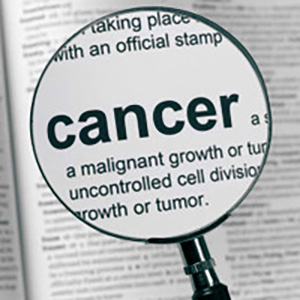The association between serum hypoxia inducible factor-1α level and urothelial bladder cancer: A preliminary study

Accepted: April 2, 2023
All claims expressed in this article are solely those of the authors and do not necessarily represent those of their affiliated organizations, or those of the publisher, the editors and the reviewers. Any product that may be evaluated in this article or claim that may be made by its manufacturer is not guaranteed or endorsed by the publisher.
Introduction: We aim to evaluate the association between serum hypoxia inducible factor (HIF)-1α level and stage and grade of urothelial bladder cancer (UBC). Methods: A case-control study was conducted at Haji Adam Malik Hospital Medan, Indonesia. Inclusion criteria for case group was subject aged 18 years or older and diagnosed with UBC based on histopathological examination. Control group consisted of gender and age matched healthy subjects. Serum HIF-1α level was determined using ELISA method. Data was analyzed with chi square, Mann Whitney, and independent T tests. Results: A total of 80 subjects were enrolled and divided into case and control groups equally. Most subjects were males with mean age of 69.65 years for case group and 68.25 years for control group. Most subjects had advanced primary tumor and lymph node stages. Only 30% subjects had metastasized UBC. Higher serum HIF-1α level was observed in case group (p < 0.001). Serum HIF-1α level was strongly associated with metastasis stage (p < 0.001), followed by lymph node (p = 0.005) and primary tumor (p = 0. 013) stages. Serum HIF-1α level was not associated with grading (p = 0.134). Conclusions: Serum HIF-1α level is associated with staging but not grading of UBC.
Burger M, Catto JWF, Dalbagni G, et al. Epidemiology and risk factors of urothelial bladder cancer. Eur Urol. 2013; 63:234-41. DOI: https://doi.org/10.1016/j.eururo.2012.07.033
Martin JW, Jefferson FA, Huang M, et al. A California cancer registry analysis of urothelial and non-urothelial bladder cancer subtypes: epidemiology, treatment, and survival. Clin Genitourin Cancer. 2020; 18:e330-6. DOI: https://doi.org/10.1016/j.clgc.2020.01.002
Fus LP, Pihowicz P, Koperski L, et al. HIF-1α expression is inversely associated with tumor stage, grade and microvessel density in urothelial bladder carcinoma. Pol J Pathol. 2018; 69:395-404. DOI: https://doi.org/10.5114/pjp.2018.81699
Mortada WI, Awadalla A, Khater S, et al. Copper and zinc levels in plasma and cancerous tissues and their relation with expression of VEGF and HIF-1 in the pathogenesis of muscle invasive urothelial bladder cancer: a case-controlled clinical study. Environ Sci Pollut Res Int. 2020; 27:15835-41. DOI: https://doi.org/10.1007/s11356-020-08113-8
Theodoropoulos VE, Lazaris AC, Kastriotis I, et al. Evaluation of hypoxia-inducible factor 1 alpha overexpression as a predictor of tumour recurrence and progression in superficial urothelial bladder carcinoma. BJU Int. 2005; 95:425-31. DOI: https://doi.org/10.1111/j.1464-410X.2005.05314.x
Xue M, Li X, Li Z, Chen W. Urothelial carcinoma associated 1 is a hypoxia-inducible factor-1α-targeted long noncoding RNA that enhances hypoxic bladder cancer cell proliferation, migration, and invasion. Tumour Biol. 2014; 35:6901-12. DOI: https://doi.org/10.1007/s13277-014-1925-x
Chai C, Chen W, Hung W, et al. Hypoxia-inducible factor-1alpha expression correlates with focal macrophage infiltration, angiogenesis and unfavourable prognosis in urothelial carcinoma. J Clin Pathol. 2008; 61:658-64. DOI: https://doi.org/10.1136/jcp.2007.050666
Theodoropoulos VE, Lazaris AC, Sofras F, et al. Hypoxia-inducible factor 1 alpha expression correlates with angiogenesis and unfavorable prognosis in bladder cancer. Eur Urol. 2004; 46:200-8. DOI: https://doi.org/10.1016/j.eururo.2004.04.008
Badr S, Salem A, Yuosif AH, et al. Hypoxia inducible factor-1alpha and microvessel density as angiogenic factors in bilharzial and nonbirharzial bladder cancer. Clin Lab. 2013; 59:805-12. DOI: https://doi.org/10.7754/Clin.Lab.2012.120605
Darmadi D, Ruslie RH. Association between Prothrombin Induced by Vitamin K Absence-II (PIVKA-II) and Barcelona Clinic Liver Cancer (BCLC) Stage, Tumor Size, Portal Venous Thrombosis in Hepatocellular Carcinoma Patients. Sains Malays. 2021; 50:475-80. DOI: https://doi.org/10.17576/jsm-2021-5002-18
Shigeta K, Hasegawa M, Hishiki T, et al. IDH2 stabilizes HIF-1α-induced metabolic reprogramming and promotes chemoresistance in urothelial cancer. EMBO J. 2023; 42:e110620. DOI: https://doi.org/10.15252/embj.2022110620
Darmadi D, Ruslie RH, Pakpahan C. Vascular endothelial growth factor levels difference among hepatocellular cancer patients based on Barcelona clinic liver cancer staging. Open Access Maced J Med Sci. 2021; 9:797-800. DOI: https://doi.org/10.3889/oamjms.2021.6598
Ruslie RH, Darmadi D, Siregar GA. Vascular endothelial growth factor (vegf) and neopterin levels in children with steroid sensitive and steroid-resistant nephrotic syndrome. Med Arch. 2021; 75:133-7. DOI: https://doi.org/10.5455/medarh.2021.75.133-137
Deniz H, Karakok M, Yagci F, Guldur ME. Evaluation of relationship between HIF-1α immunoreactivity and stage, grade, angiogenic profile and proliferative index in bladder urothelial carcinomas. Int Urol Nephrol. 2010; 42:103-7. DOI: https://doi.org/10.1007/s11255-009-9590-5
Copyright (c) 2023 the Author(s)

This work is licensed under a Creative Commons Attribution-NonCommercial 4.0 International License.
PAGEPress has chosen to apply the Creative Commons Attribution NonCommercial 4.0 International License (CC BY-NC 4.0) to all manuscripts to be published.


 https://doi.org/10.4081/aiua.2023.11292
https://doi.org/10.4081/aiua.2023.11292



